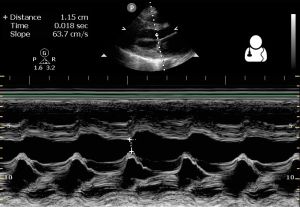Peripartum cardiomyopathy
(Redirected from Peripartum Cardiomyopathy)
Background
- Uncommon cause of heart failure
- Incidence: 1:968 to 1:4000 in the United States[1]
Clinical Features
- Peripartum with presentation similar to typical CHF
- Usually occurs in last month of pregnancy or first five months postpartum
Differential Diagnosis
Cardiomyopathy
- Dilated cardiomyopathy
- Hypertrophic cardiomyopathy
- Restrictive cardiomyopathy
- Peripartum cardiomyopathy
- Takotsubo cardiomyopathy
- Arrhythmogenic right ventricular dysplasia
3rd Trimester/Postpartum Emergencies
- Acute fatty liver of pregnancy
- Amniotic fluid embolus
- Chorioamnionitis
- Eclampsia
- HELLP syndrome
- Mastitis
- Peripartum cardiomyopathy
- Postpartum endometritis (postpartum PID)
- Postpartum headache
- Postpartum hemorrhage
- Preeclampsia
- Resuscitative hysterotomy
- Retained products of conception
- Septic abortion
- Uterine rupture
Evaluation
Workup
- ECG
- CXR
- CBC & LFTs
- screen for thrombocytopenia or transaminitis that can be found with severe pre-eclampsia
- Chemistry
- TSH
- Echocardiography
- bedside TTE can show LV dilation and LV systolic dysfunction
- BNP
Diagnosis
4 criteria needed to meet definition:[2]
- Development of heart failure in last month of pregnancy or within 5 month postpartum
- No identifiable alternate cause of heart failure
- No pre-existing heart disease
- LV ejection fraction < 45%
Management
- Treat like usual heart failure
- Consider anticoagulation if EF <30% during and 2-3mo after delivery; avoid warfarin and DOACs
- If pregnant:
- Avoid nitroprusside and ACEI
- Use of phenylephrine and norepinephrine controversial
- Consider fetal monitoring to assist in evaluating uterine perfusion
Disposition
- Admit
Prognosis
- Mortality rate up to 10%[5]
- High risk of recurrence in subsequent pregnancies[5]
- Many patients recover within 3 to 6 months of disease onset[5]
See Also
References
- ↑ Sliwa K et al. Current state of knowledge on aetiology, diagnosis, management, and therapy of peripartum cardiomyopathy: a position statement from the Heart Failure Association of the European Society of Cardiology Working Group on peripartum cardiomyopathy. Eur J Heart Fail. 2010;12(8):767. PMID: 20675664
- ↑ Elkayam U et al. Pregnancy-associated cardiomyopathy: clinical characteristics and a comparison between early and late presentation. Circulation. 2005 Apr 26; 111(16): 2050-5.
- ↑ Van Nimwegen D, Dyer DC. The action of vasopressors on isolated uterine arteries. Am J Obstet Gynecol. 1974;118(8):1099.
- ↑ Branco D, Caramona M, Martel F, de Almeida JA, Osswald W. Predominance of oxidative deamination in the metabolism of exogenous noradrenaline by the normal and chemically denervated human uterine artery. Naunyn Schmeidebergs Arch Pharmacol. 1992 Sep;346(3):286-93.
- ↑ 5.0 5.1 5.2 Bhattacharyya A et Al. Peripartum Cardiomyopathy: A Review. Tex Heart Inst J. 2012; 39(1): 8–16.



